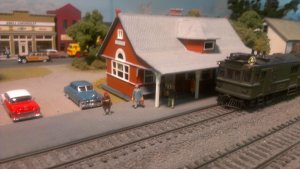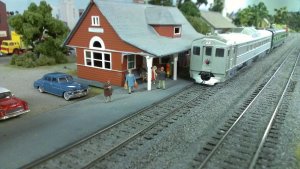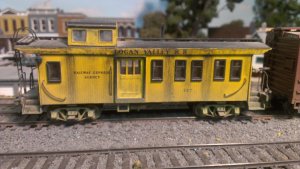RCShadow
Member
I just won this on eBay for $51. I hope I did not make a mistake but the wife liked it a lot. It does have DCC and lighting though.
View attachment 38909
View attachment 38909
RCShadow:
Nice model and worth the purchase price.
I have a Bachmann Doodlebug still in the box after maybe 7 or 8 years. But, I do run a Walter's SOO Line doodlebug that I installed DCC and a LED for the headlight. Its a great runner and will pull several cars.
Doodlebugs are great for smaller layouts to provide some type of passenger service along with freight.
Thanks for sharing.
Greg
 It's not a bad running unit, but a bit noisy before some tweaking. Sometimes I may put a passenger car on for a trailer. The only other equipment I have for local passenger service is an NP RDC with a club car for a trailer, or a drovers caboose on a local freight.
It's not a bad running unit, but a bit noisy before some tweaking. Sometimes I may put a passenger car on for a trailer. The only other equipment I have for local passenger service is an NP RDC with a club car for a trailer, or a drovers caboose on a local freight.

One thing you may want to look at is the "slop" in the commutator of the motor. If there is too much, a thrush washer placed on the end of the axle can help. If there isn't enough slop, you may have to remove one, if present.
Another thing that always helps is inspecting the gears for any flash that may still be attached to the gears. Some work with a file is necessary to remove this from the gears, and you can always clean all the old grease out of the gearbox, and replace the grease and oil with baking soda, running the gears in, using the soda as a lapping compound. After the short run in, wash the soda out of the gearbox, and then re-lube. The truck should run better.
These are some of the things I do to all of my locos, steam or diesel. Leftover flash, and slop in the commutator are generally present in most mass produced models, and eliminating, or lessening these will go a long way to improving the operations of these powered models.
Believe it or not, most gears in locos are made from 2 part molds, and it seems that there is a fine line at the center of the gears, and this needs to be removed via the files. You can also use a #11 blade to do this, but I would still use the files and the baking soda. If you can find some powdered toothpaste, it works much better than soda. Some people use "Pearl Drops" toothpaste, but I've found that sometimes there is no consistency in the size of the particles, so I stick with the soda.
If you do ever get tired of the doodle bug I'm here for you .

